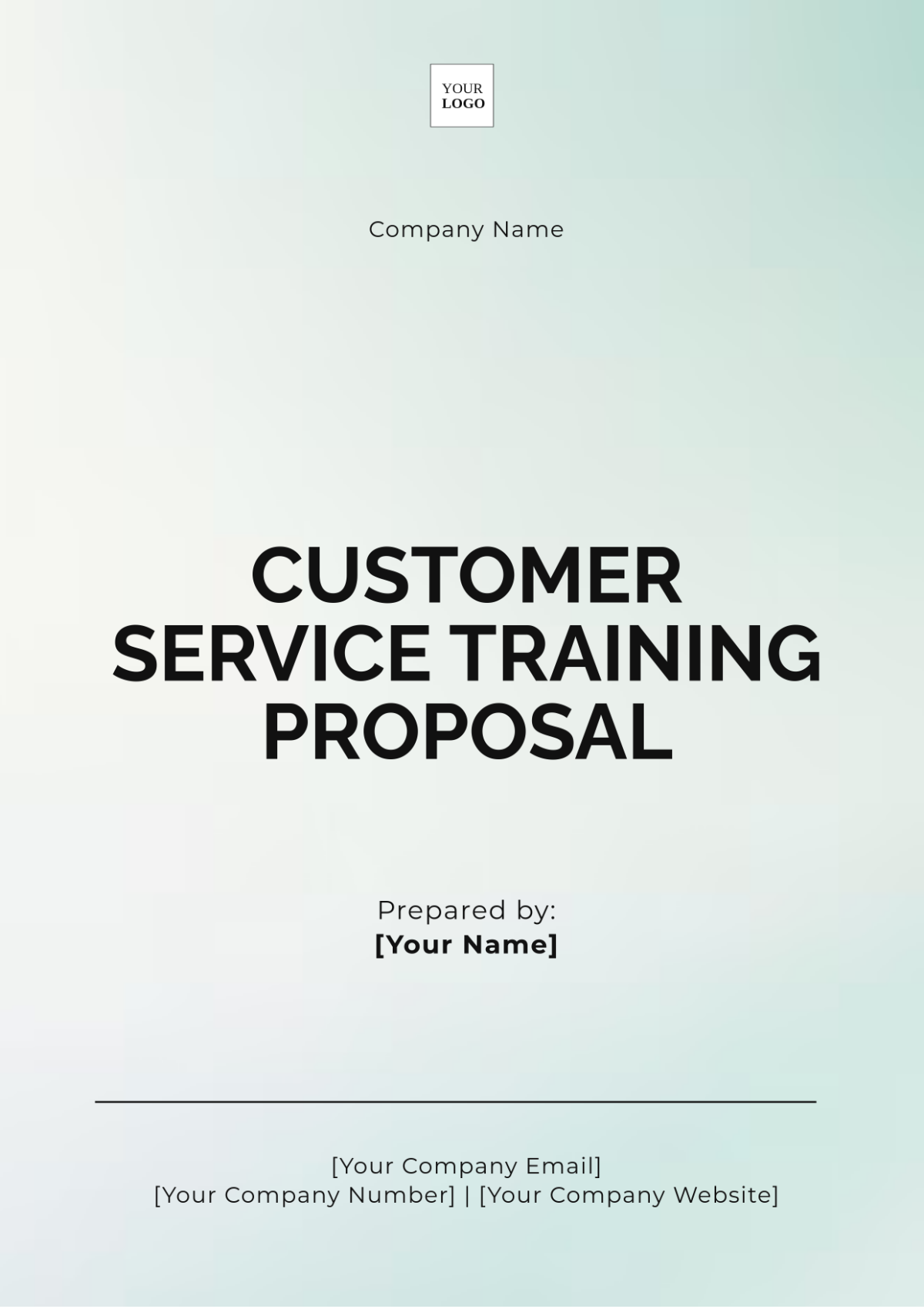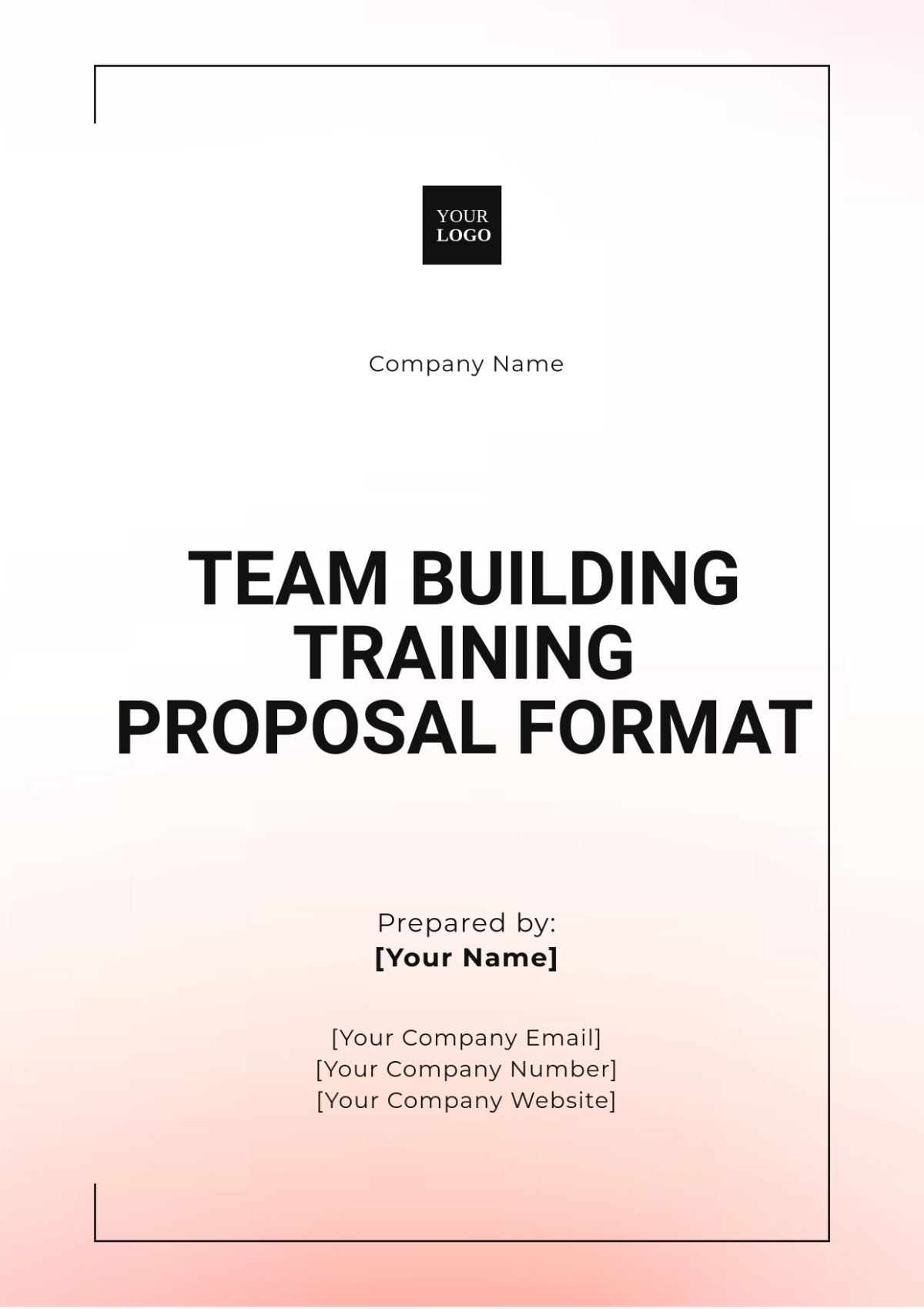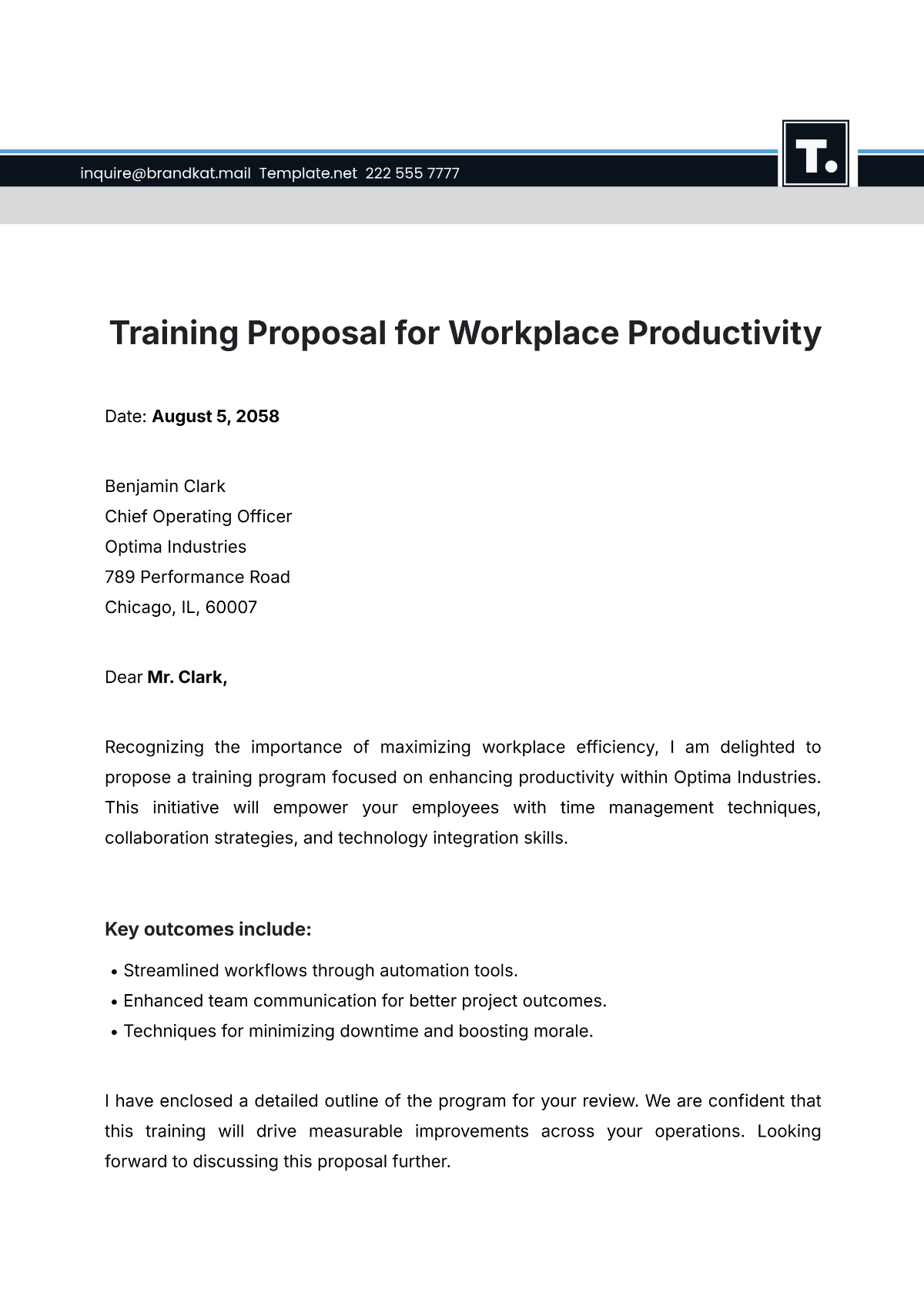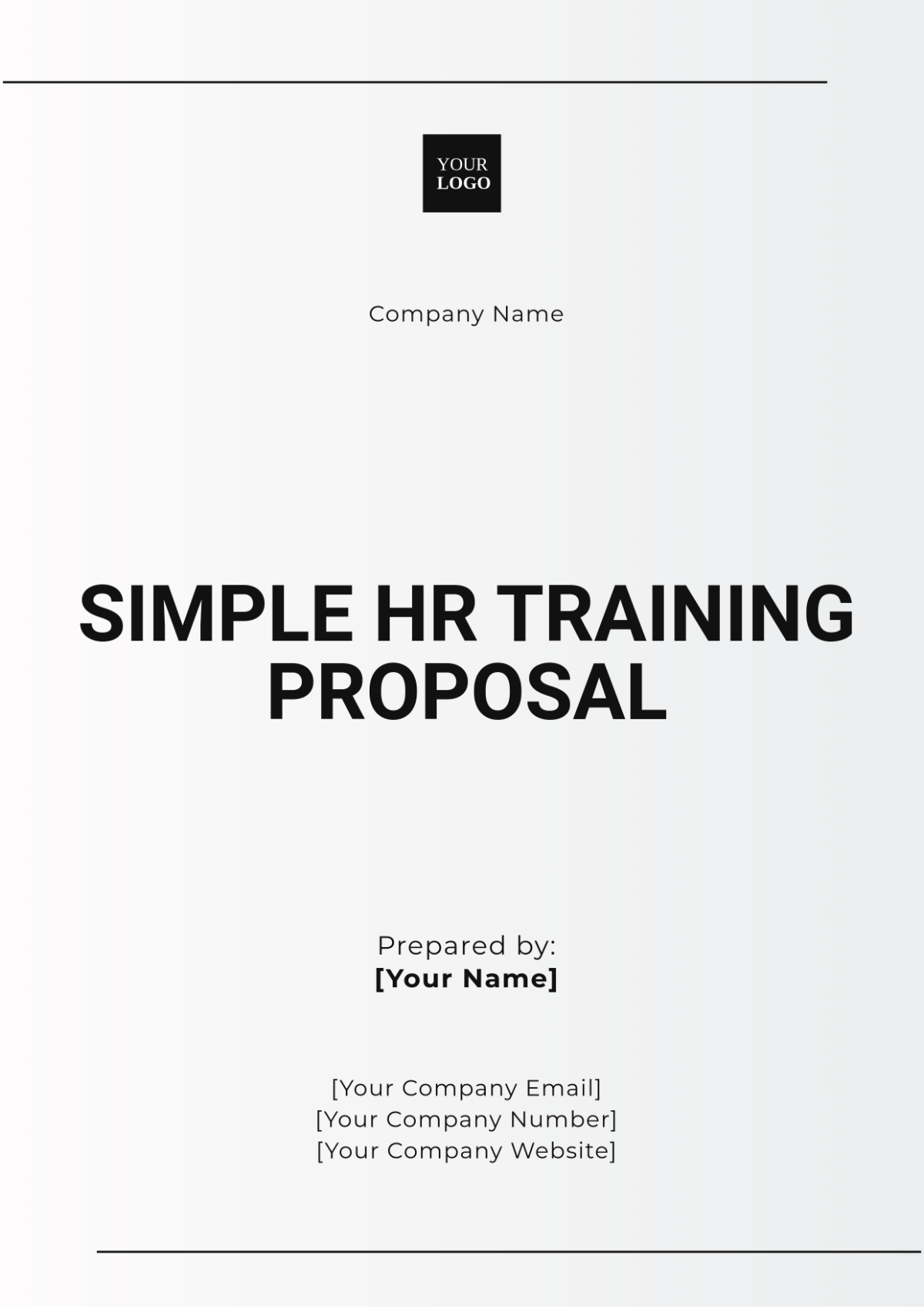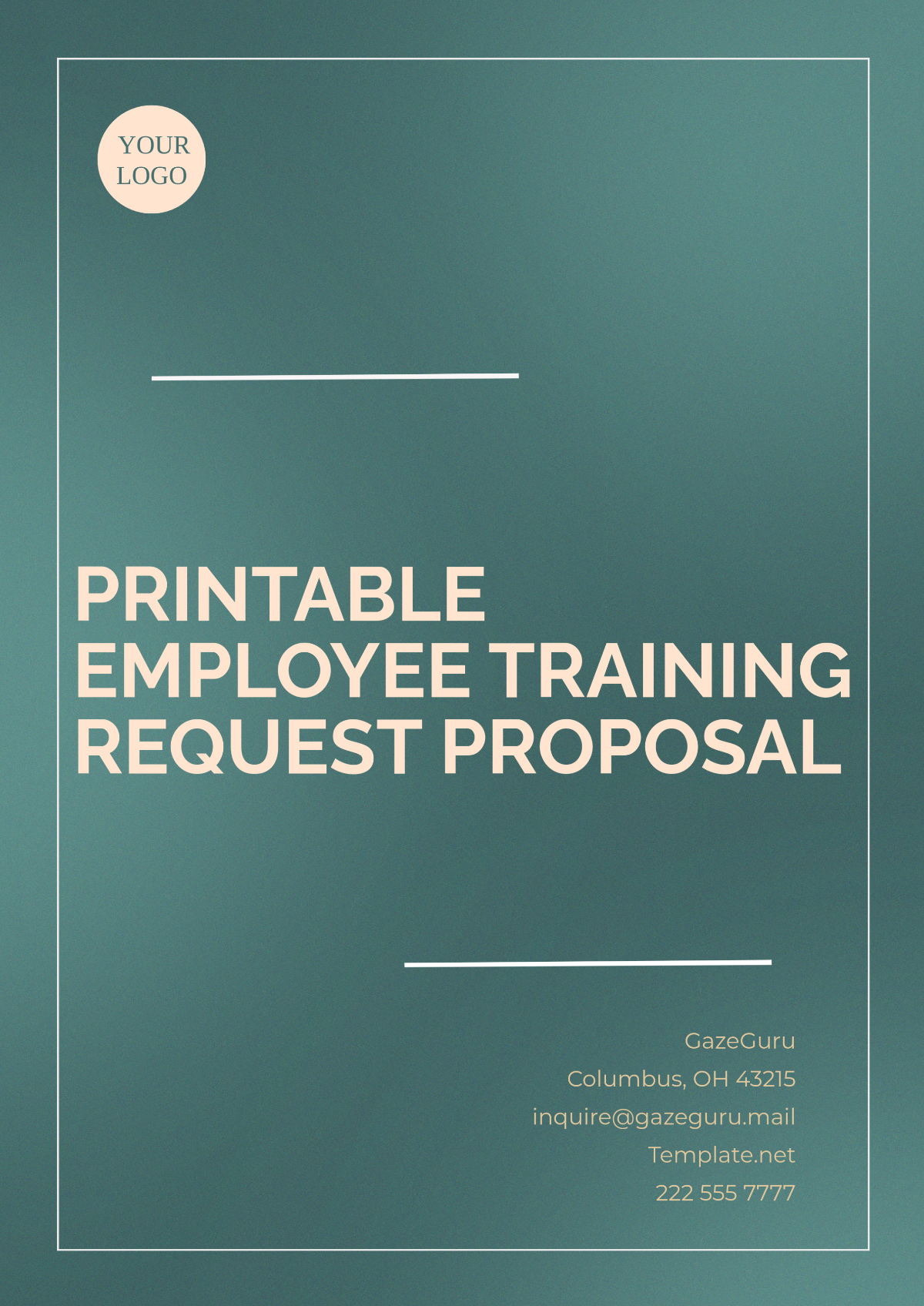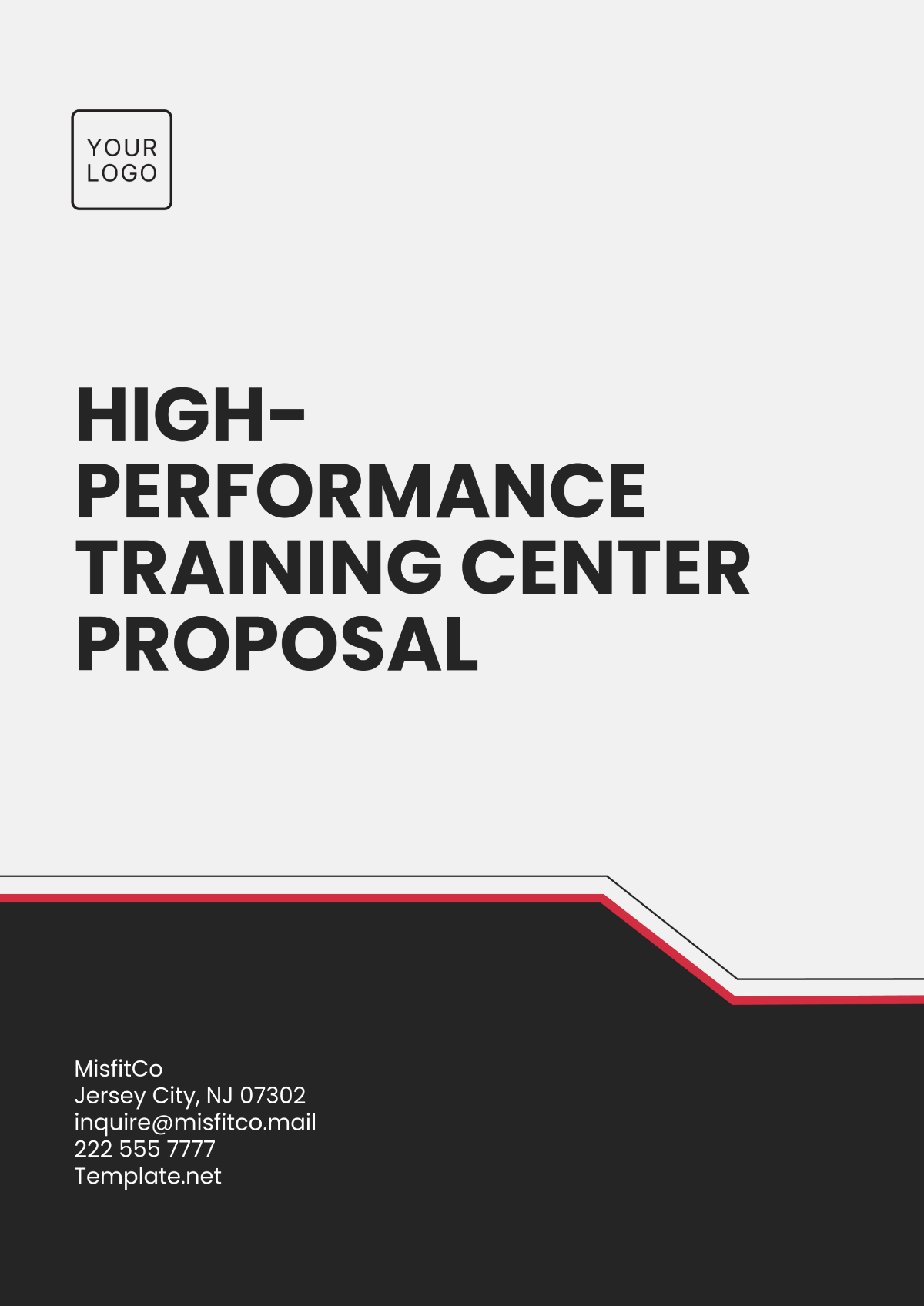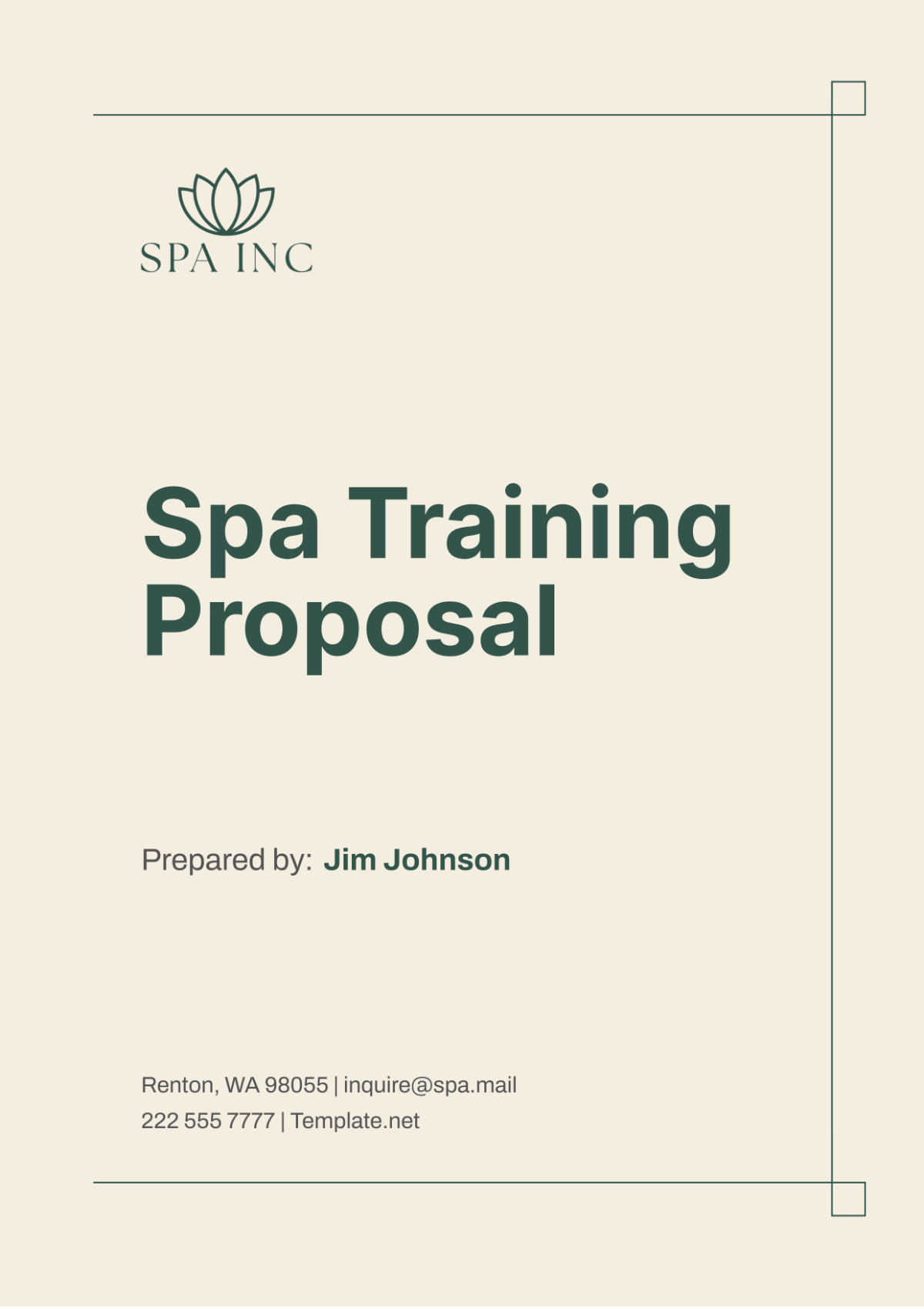Training Evaluation and Feedback Proposal
Prepared by: [Your Name]
Company: [Your Company Name]
Date: [Date]
I. Introduction
This Training Evaluation and Feedback Proposal aims to systematically assess the effectiveness of our organization's training programs. By leveraging structured feedback mechanisms and evaluation metrics, this proposal seeks to enhance training quality, ensuring it aligns with our strategic objectives. Effective evaluation not only identifies successful aspects of our training but also uncovers areas for growth, promoting a culture of continuous learning and improvement.
II. Objectives
A. Primary Objectives
The primary objectives of this proposal are:
To evaluate the effectiveness of the training program in enhancing the skills and competencies of participants.
This will involve comparing participant performance before and after the training to quantify skill development.To ensure training content is relevant and aligned with organizational goals.
We will assess the alignment of training materials with our strategic initiatives, ensuring they address current business needs and challenges.To identify areas of improvement for future training sessions.
Insights from evaluations will help refine training content, methodologies, and delivery methods to maximize participant engagement and learning outcomes.
B. Secondary Objectives
Additional objectives include:
To gather comprehensive feedback from participants and stakeholders.
Engaging with participants post-training will provide insights into their experiences and perceptions, fostering a feedback-rich environment.To benchmark our training programs against industry standards.
Comparing our training initiatives with best practices in the industry will help us identify gaps and opportunities for enhancement.
III. Methodology
A. Feedback Collection
Feedback will be collected using a combination of qualitative and quantitative methods, ensuring a holistic evaluation approach. The methods include:
Surveys and Questionnaires
These tools will be distributed to participants immediately after training sessions to capture their thoughts on content relevance, trainer effectiveness, and overall satisfaction.Interviews with Participants
In-depth interviews will be conducted with a representative sample of participants to explore their experiences in greater detail.Focus Groups with Key Stakeholders
Organizing focus groups with department heads and managers will facilitate discussions on how training outcomes can be applied to meet departmental goals.Observation of Training Sessions
Trained evaluators will observe training sessions to assess delivery methods, participant engagement, and interaction quality.
B. Data Analysis
Data collected through these methods will be analyzed using both descriptive and inferential statistics. Statistical software such as SPSS or R will be employed to process and interpret the data effectively. Key aspects of data analysis will include:
Comparative Analysis: Analyzing pre- and post-training assessment scores to measure learning gains.
Thematic Analysis: Identifying recurring themes from qualitative feedback to highlight strengths and areas for improvement in training programs.
IV. Metrics
A. Quantitative Metrics
The following quantitative metrics will be used to evaluate training effectiveness:
Metric | Description |
|---|---|
Learning Score | Average score improvement from pre- to post-training assessments. |
Completion Rate | Percentage of participants who completed the training program. |
ROI (Return on Investment) | Cost-benefit analysis of the training program, considering both direct and indirect benefits. |
B. Qualitative Metrics
Qualitative insights will also be gathered through narrative feedback, focusing on:
Participant Satisfaction Level
Evaluating how satisfied participants felt with the training content, delivery, and overall experience.Trainer Effectiveness
Assessing trainers’ abilities to engage participants and convey information clearly and effectively.Relevance of Content to Participants' Roles
Ensuring that the training content is applicable and beneficial to participants’ specific job functions.
V. Timeline
A. Planning Phase
The planning phase will span one month, during which the evaluation framework and feedback tools will be designed and tested. This includes:
Identifying key stakeholders and forming an evaluation committee.
Designing surveys and interview protocols.
Conducting a pilot test of the feedback tools with a small group to refine questions.
B. Implementation Phase
This phase will last for two months, during which data will be collected and monitored continuously. Key activities will include:
Administering surveys and conducting interviews.
Collecting observational data during training sessions.
Regular check-ins with facilitators to ensure smooth data collection.
C. Analysis and Reporting Phase
The final phase will take one month to complete detailed data analysis and generate comprehensive reports for stakeholders. This includes:
Finalizing the data analysis and interpreting results.
Preparing a detailed report summarizing findings, insights, and recommendations.
Scheduling a presentation meeting with stakeholders to discuss outcomes and next steps.
VI. Reporting
A. Report Structure
The final report will be structured as follows:
Executive Summary
A brief overview of the evaluation purpose, key findings, and recommendations.Introduction and Objectives
A detailed description of the training programs evaluated and the objectives of the evaluation.Methodology and Metrics Used
Explanation of the feedback collection methods and metrics employed for the evaluation.Findings and Analysis
Presentation of quantitative and qualitative findings, supported by charts, graphs, and thematic summaries.Recommendations
Actionable suggestions for improving future training sessions based on evaluation results.Conclusion
A summary emphasizing the importance of continuous evaluation and the commitment to enhancing training effectiveness.
B. Presentation to Stakeholders
A presentation will be conducted to share findings and recommendations with key stakeholders, ensuring transparency and collaborative improvement. This will include:
A visual presentation summarizing key insights and data trends.
An interactive Q&A session to discuss the implications of the findings.
A discussion on strategic actions and timelines for implementing improvements based on the evaluation.
VII. Conclusion
By implementing a structured approach to training evaluation and feedback, this proposal aims to enhance the overall quality and impact of our training programs. Through continuous improvement and alignment with organizational goals, we strive to foster a high-performance culture within our organization. This commitment to evaluation not only promotes accountability but also ensures that our training initiatives remain relevant, effective, and valuable for all participants.

